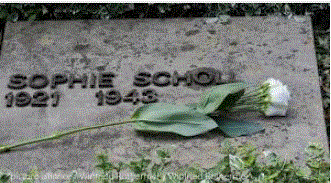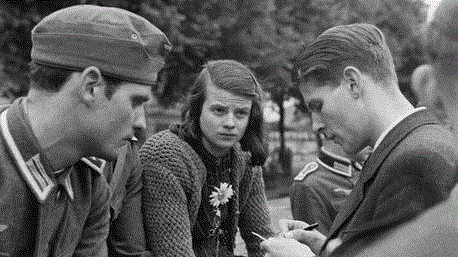
“The main activity of the priests is to undermine National Socialist policy.”
«(…) One of these days I will bring this conflict, which is as old as the history of Germany itself, to an abrupt and decisive conclusion. I’ll make these damned priests feel the power of the state in a way they never dreamed of! At the moment I dedicate myself to watching them, if I had the slightest suspicion that they were becoming dangerous, I would shoot them all» (AdolfHitler, Hitler’s Table Talk, April 7 and August 11, 1942).
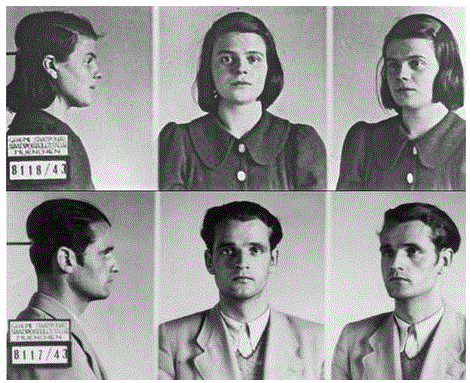
On August 21, 1942, the Catholic priest Franz Reinisch, a member of the Schoenstatt Movement, he was executed for refusing to take the oath of obedience to the person of Adolf Hitler. Catholics, but also Protestants and Orthodox, were part of the German resistance against the Nazi regime. At first they were individual initiatives like those of Father Reinisch, but little by little they developed organizations of civil resistance. Two examples are the White Rose (Weiße Rose), who is born in June of that year; and the Kreisau Circle, which met from 1940 in the house of Count Helmuth James von Moltke, planning post-World War II Germany and the Third Reich. Three of the members of the Circle they were Jesuit priests (Augustin Rösch who was the provincial, Lothar Konig and Alfred Delp), but there were also Protestants, women, among others. The main cause of opposition, both in Germany and in occupied Europe, was the rejection of genocide and the various forms of slavery of the New Order. The conscience had awakened before the horror of evil.
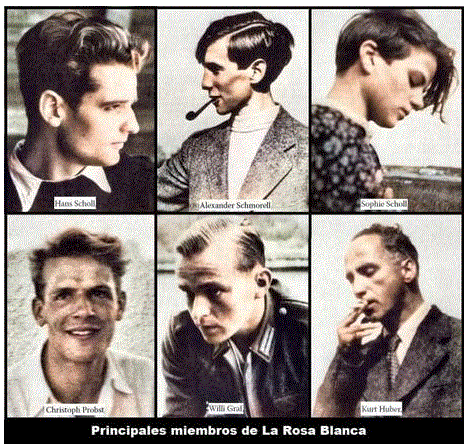
Every year, in our WWII 80th anniversary project, we are challenged to summarize the resistance, espionage, and commando activities during the relevant year (now 1942) in a single article. We will always fall short, so we have dedicated ourselves more to the resistance and especially within Germany and France; but at some point we also refer to other peoples, as was the case in Czechoslovakia when dealing with the attack on the SS-Obergruppenführer Reinhard Heydrich last May. In the first we want to highlight that along with the Prussian authoritarian and militaristic tendency there was a German republicanism that loved freedom. The Kreisau Circle, for example, he planned the “other Germany”: a Christian, democratic and federal nation. And we analyze the French case for having the cinematographic hegemony when recounting the fight against the occupier. Not to mention the fascinating internal conflict between the various groups that wanted to lead the fight. God willing, we will dedicate ourselves to this topic the last week of October because we have a close relationship with the North African Front and “Operation Torch”.
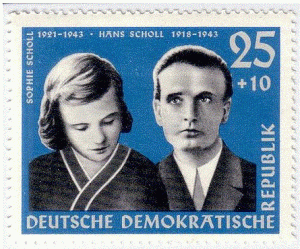
The White Rose is quite well known, there are monuments and the names of its main members have been given to streets and squares throughout Germany. The cinema has contributed to her memory with more than three films and several documentaries. Of the films we know, they are all German, the first is Die Weiße Rose (1982) by Michael Verhoeven; and is dedicated to narrating the development of the movement from its beginnings in June 1942 to its end on February 22, 1943, emphasizing the Scholl brothers: Hans and Sophie, and although the other brothers also appear, the tendency to consider that they were the leaders. The rest of the members are constantly shown with their respective opinions, especially the non-violent nature of the resistance. Sophie is the protagonist, not only because of the merits that she really had, but also because there is a clear influence of the feminism of the eighties in this representation. Regarding the strong Christian spirituality of the majority of its members; made notable in pamphlets, diaries, and letters; I perceive that it is treated very superficially. That same year another film was made (PercyAdlon: FünfletzteTage/ The last five days) that we have not seen, but that deals with the perspective of the prisoner who accompanies Sophie in the cell: the communist Else Gebel.
In the most recent one made for the cinema (there are others for TV since the oldest one from 1971: der pedelland the last one in 2013 and a documentary on the centenary of the birth in 2021) entitled Sophie Scholl. Die letztenTage (2005) and directed by Marc Rothemund; although only the events are narrated that go from the launch of pamphlets at the University of Munich on February 18, 1943, his capture, the long interrogations by the Gestapo, the trial of the president of the “People’s Court”: Roland Freisler and the execution of the first three on February 22: Hans and Sophie Scholl, and Christoph Probst; the profound Christian piety of the Scholls is highlighted. This factor is proven by primary sources and historiography, among which we are guided by the excellent text by historian José María García Pelegrín: The White Rose: the students who rose up against Hitler (2006). Sophie, like her brothers, were Lutheran, but in her city (Ulm) like the rest of southern Germany, the Catholic influence was decisive and many parish priests and bishops carried out a systematic opposition to Nazism that aroused the admiration of all Christian denominations.
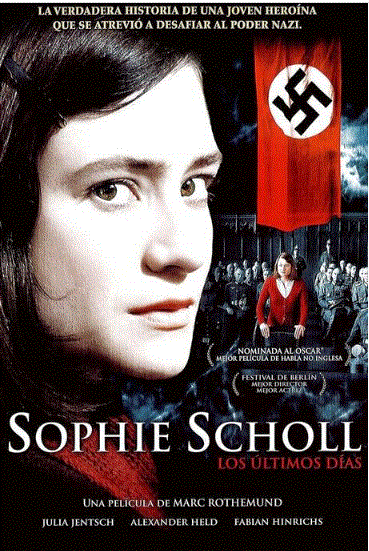
Artists and various intellectuals met in the Scholl house since the 1930s. Many writers were read that the Third Reich would ban such as Stefan Zweig, Thomas Mann, Erich Maria Remarque, among others. The most important influence will be received from Otto Aicher who was a Catholic, a classmate of Werner the youngest of the brothers. “Otl”, who would finally marry Inge (the older sister), would introduce them to the great philosophers and fathers of the Church (they read the confessions of Saint Augustine). Werner was assuming Catholicism and everyone in general was fascinated with the French authors of Christian personalism such as Jaques Maritain, Leon Bloy, Ettener Gilson, etc. Of the Germans following in the footsteps of the French were Carl Muth and Theodor Haecker. They also read Cardinal Newman and other converts. Christian humanism would lead them to reject the evil that Nazism meant, and even more so when the genocidal nature of the regime was proven with the participation in the Eastern Front in the summer of 42 of many of the members of the White Rose.
The other German resistance organizations, such as the one grouped around Admiral Wilhelm Canaris (head of the Abwehr, the military intelligence service) and the one that will lead to the plot of July 20, 1944 will be explained when we get closer to the date. At the same time we still need to explain the various forms of resistance throughout occupied Europe and also in Germany, in which many Catholics or did not participate by hiding or helping to flee thousands of Jews. Another event that celebrated its 80th anniversary (on August 22) was Brazil’s declaration of war against the Axis, but we will deal with it when explaining the Battle of the Atlantic in October because it is closely linked to it.
Lastly, we cannot fail to support the denunciation of the Confederation of Israelite Associations of Venezuela (CAIV) made on August 22, 2022 regarding the Holocaust denier statements of businessman Esteban Trapiello on Sunday, August 21, in the program via podcast pair of bald men led by journalists Vladimir Villegas and Pedro Carvajalino. In it he declared that Adolf Hitler “did not finish everything he wanted to do” and when asked if he was referring to the extermination of Jews and people considered inferior from the Nazi perspective, he replied: “I cannot believe that story.” The systematic study of the Second World War and totalitarianism that we have been carrying out for several years requires us to take a stand against any expression and ideology of hate that tries to deny (or even support) the greatest tragedy experienced by humanity.
